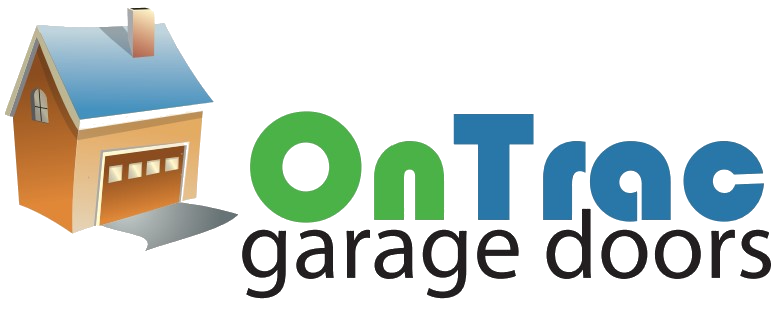How do I make my garage door quieter? Why is my garage door so loud?
A garage door shouldn’t sound like a freight train. Most noise comes from friction, vibration, or parts that are worn, loose, or out of balance. The good news: many fixes are simple, safe tune-ups you can do in minutes. Others are quick professional adjustments that make a huge difference in quiet, reliability, and safety.
Noise decoder: what the sound usually means
Squeaking or squealing
Likely dry hinges, rollers, or bearings; sometimes slightly misaligned tracks.
Fix: Clean and lubricate metal-on-metal pivot points.
Grinding or scraping
Often bent track, worn rollers, or a roller rubbing the track edge.
Fix: Replace worn rollers, true the track, tighten fasteners.
Rattling or clattering
Loose hinge bolts, track fasteners, opener rail hardware, or thin doors vibrating.
Fix: Tighten hardware, add vibration isolation to the opener, consider a reinforcement strut.
Banging or thudding
Unbalanced door, failing spring, loose opener chain, or panels flexing.
Fix: Have the springing/balance checked; adjust opener chain/belt tension.
Hum, then stop
Opener trying to lift an unbalanced or jammed door; stripped opener gear.
Fix: Resolve door balance/track issues first; repair opener as needed.
A safe, 20-minute quiet tune-up (DIY)
- Tighten hardware
With the door closed, snug hinge screws, roller bracket bolts, and track fasteners with a nut driver. Don’t overtighten into wood.
Safety: Never loosen or touch the bottom roller bracket or spring hardware; these are under high tension. - Clean the tracks
Wipe inside the vertical and horizontal tracks with a dry or slightly damp cloth. Remove debris and old, sticky residue. Do not grease the tracks; rollers need a clean path, not a slippery one. - Lubricate the moving parts
Use a garage-rated silicone spray or light lithium spray. One small burst on each hinge knuckle, roller bearings (avoid the wheel tread), center bearing, and torsion spring coils. Wipe excess.
Avoid: WD-40 as a lubricant (it’s a cleaner), heavy greases, or oil on the track. - Check opener hardware
Snug the opener rail bolts, header bracket, and ceiling mounts. Add neoprene or rubber isolation pads between the opener and ceiling angle iron to cut vibration transfer. - Sensor clean and align
Wipe photo-eye lenses and confirm LEDs are solid when aligned. Misaligned sensors can make the opener chatter or reverse.
Upgrades that make the biggest difference in quiet
Nylon rollers with sealed bearings
Swapping old steel or worn plastic rollers for 10–13 ball nylon rollers dramatically reduces rolling noise and vibration.
Belt-drive or wall-mount (jackshaft) opener
A DC belt-drive with soft start/stop is much quieter than chain; wall-mount openers eliminate rail vibration entirely and free ceiling space.
Polyurethane-insulated “sandwich” door
Insulated door sections are stiffer and absorb sound, so the whole system runs quieter and feels more solid.
Reinforcement strut and hinge refresh
A top reinforcement strut keeps wide doors from flexing; replacing loose, worn hinges stops clatter at the joints.
High-cycle springs, properly balanced
When a door is perfectly counterbalanced, the opener doesn’t struggle; operation is quieter and components last longer.
Balance, alignment, and when to call a pro
Quick balance check (safe)
Disconnect the opener (pull the red cord with the door down). Lift the door by hand to waist height and release. If it won’t stay put—or shoots up or drops—the spring balance is off.
Call a pro for spring work
Torsion and extension springs are under dangerous tension. Professional sizing, winding, and balancing are essential for safety and quiet performance.
Track truing
If the track is visibly bent, too tight to the door, or not plumb/level, have it adjusted. Over-tight tracks make grinding sounds and accelerate wear.
Off-track or binding
Stop using the door and get service immediately to prevent panel, cable, or opener damage.
Opener quieting tips
Set proper chain/belt tension
A droopy chain rattles; an over-tight chain roars. Follow your opener’s spec for deflection.
Lubricate the rail trolley (if required)
Some rails use a small amount of grease on the trolley slide. Many belt rails do not—check the manual.
Adjust speed and force limits
Too much downforce can thud; too little can chatter and reverse. Recalibrate per the manual after any mechanical repair.
Add a battery backup
DC openers with battery backup often run smoother and quieter and protect from power dips that cause jerky movement.
Don’t forget the door perimeter
Bottom seal and side weatherstripping
Dried, flattened seals let panels slap the floor and rattle in wind. Fresh seals add a softer, quieter close and improve energy efficiency.
Striking surface
If the floor is uneven, consider a flexible bulb or a threshold to cushion the close.
Maintenance schedule for a quiet door
Every 3–6 months: Wipe tracks, clean sensors, lubricate hinges/rollers/springs, tighten hardware.
Annually: Professional tune-up to inspect springs, cables, bearings, drums, balance, and opener calibration.
Anytime: Replace cracked rollers, loose hinges, worn seals, and noisy pulleys before they escalate.
Costs and what to expect
Nylon roller upgrade (10–12 rollers)
Parts: typically modest; Pro installed: usually a quick, affordable visit.
Belt-drive opener swap
Mid-range with Wi-Fi/battery backup installed is a common upgrade; quieter immediately.
Annual professional tune-up
Inexpensive compared to emergency repairs; includes balance, safety tests, and adjustments that keep things quiet.
Bottom line
Loud garage doors are almost always fixable. Start with a simple clean-and-lube, tighten hardware, and isolate opener vibration. If noise persists, upgrading rollers, ensuring the door is balanced, and moving to a belt-drive or wall-mount opener will transform the sound and feel of your system. Leave springs, cables, and major alignment to a pro for safety and the best long-term results.
If you’d like, I can tailor a step-by-step quieting plan to your specific door style, opener brand, and symptoms—or help you choose quiet upgrades that fit your budget.
